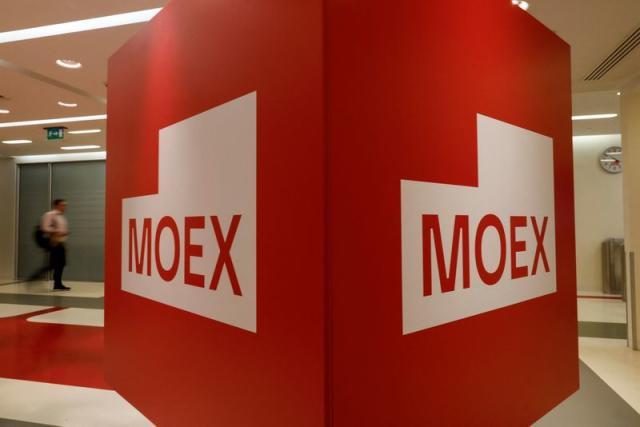Russia was forced on Thursday to suspend trading in dollars and euro on the Moscow Exchange, its top financial bourse, after a further round of US sanctions.
The escalation in sanctions by the US Treasury led to former Russian president Dmitry Medvedev, who is now a senior security official, to call on the population to “inflict maximum harm” on Western societies and infrastructure in retaliation.
“Every day we should try to do maximum harm to those countries that have imposed these restrictions. Harm their economies, their institutions and their rulers. Harm the well-being of their citizens, their confidence in the future,” Medvedev wrote on his official Telegram channel, which has over 1.3 million followers. Critics say he has become a “scaremonger, whose job is to deter Western action over Ukraine.”
ALSO SEE: Hong Kong, UAE Firms Hit With Sanctions for Russian Gold Deals
The latest US move targeted 300 entities and individuals – including dozens of Chinese components suppliers – in a bid to cut off Russian access to products and services needed to sustain military production for its war in Ukraine.
Secondary sanctions target entities doing business with Russian companies or individuals who have been put under sanction. They apply to entities working with Russia’s defence industry or any sanctioned Russian business or individual, including Russia’s biggest banks.
US officials timed the move so that sanctions were in place ahead of G7 summit of world leaders in Italy.
It led to several leading Russian banks and brokerages blocking access to corporate hard-currency accounts.
Stocks on the Moscow exchange sank initially on Thursday, but recovered later. The ruble, which was under 90 to the US dollar on Wednesday, shot up to 200 to the dollar, Kommersant newspaper said.
Economists said the ban on trading in dollars and euros would significantly raise the cost of doing business with Russia and may stoke inflation, which is already about 8%.
The exchange and the central bank rushed out statements on Wednesday, a public holiday in Russia, within an hour of Washington announcing the new sanctions.
“Due to the introduction of restrictive measures by the United States against the Moscow Exchange Group, exchange trading and settlements of deliverable instruments in US dollars and euros are suspended,” the central bank said.
Businesses forced to do over-the-counter deals
The move means banks, companies and investors will no longer be able to trade either currency via a central exchange, which offers advantages in terms of liquidity, clearing and oversight.
Instead, they will have to trade over-the-counter (OTC), where deals are conducted directly between two parties. The central bank said it would use OTC data to set official exchange rates.
Many Russians hold part of their savings in dollars or euros, mindful of periodic crises in recent decades when the rouble has crashed in value. The central bank reassured people that these deposits were secure.
“Companies and individuals can continue to buy and sell US dollars and euros through Russian banks. All funds in US dollars and euros in the accounts and deposits of citizens and companies remain safe,” it said.
One person at a large, non-sanctioned Russian commodities exporter said: “We don’t care, we have yuan. Getting dollars and euros in Russia is practically impossible.”
With Moscow pursuing closer trade and political ties with Beijing, China’s yuan has ousted the dollar to become MOEX’s most traded currency, accounting for 53.6% of all foreign currency traded in May.
Dollar-rouble trading volume on MOEX tends to be around 1 billion roubles ($11 million) a day, according to LSEG data, while euro-rouble trading hovers at around 300 million roubles daily. For yuan-rouble trading, daily volumes now regularly top 8 billion roubles.
Central bank prepared for sanctions 2 years ago
On the eve of the national holiday, the rouble closed at 89.10 to the dollar and at 95.62 against the euro. But following the sanctions news, some banks immediately jacked up their dollar rates.
Norvik Bank said it was offering to buy dollars for just 50 roubles but sell for 200 roubles, though it later adjusted the rates to 88.20/97.80. Tsifra Bank was buying dollars at 89 roubles and selling at 120.
Other major banks were quoting narrower spreads of 6-7 roubles between their buy and sell rates.
The US Treasury said it was “targeting the architecture of Russia’s financial system, which has been reoriented to facilitate investment into its defence industry and acquisition of goods needed to further its aggression against Ukraine”.
Russia’s central bank has been bracing for such sanctions for around two years. In July 2022, the bank said it was modelling various sanctions scenarios with forex market participants and infrastructure organisations.
“This is bad, but expected news,” Russian broker T-Investments said on Telegram.
Forbes Russia had reported in 2022 that the central bank was discussing a mechanism for managing the rouble-dollar exchange rate should exchange trading be halted in the event of sanctions against MOEX and its National Clearing Centre, which was also hit by the new sanctions.
Dollar and euro trades cease
MOEX said share trading and money market trades settled in dollars and euros would also cease.
The sanctions will hit the exchange’s profits by slashing trading volumes. In May, total volume on MOEX was 126.7 trillion roubles ($1.43 trillion), up more than a third on the same month of the previous year.
In 2023, MOEX recorded net profit of 60.8 billion roubles, a year-on-year increase of 67.5%.
Yevegeny Kogan, an investment banker and professor at Russia’s Higher School of Economics, urged people against panicking.
“You know, it’s genetic for us – if we’re scared, we run to buy currency. And it doesn’t matter whether it’s 100, 120 or 150. You mustn’t rush,” he warned people on Telegram, saying things could get very serious if people ignored that advice.
“Friends, it looks like tomorrow will be a very nervy day.”
- Reuters with additional editing by Jim Pollard
























